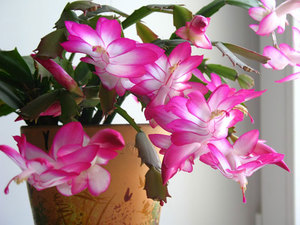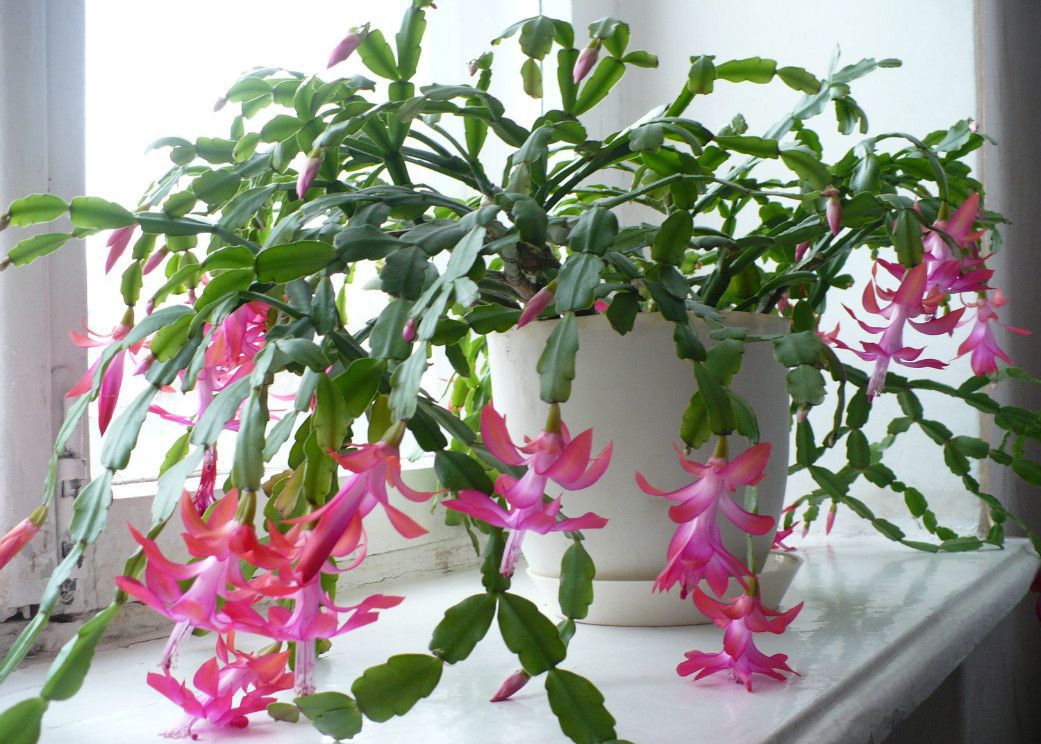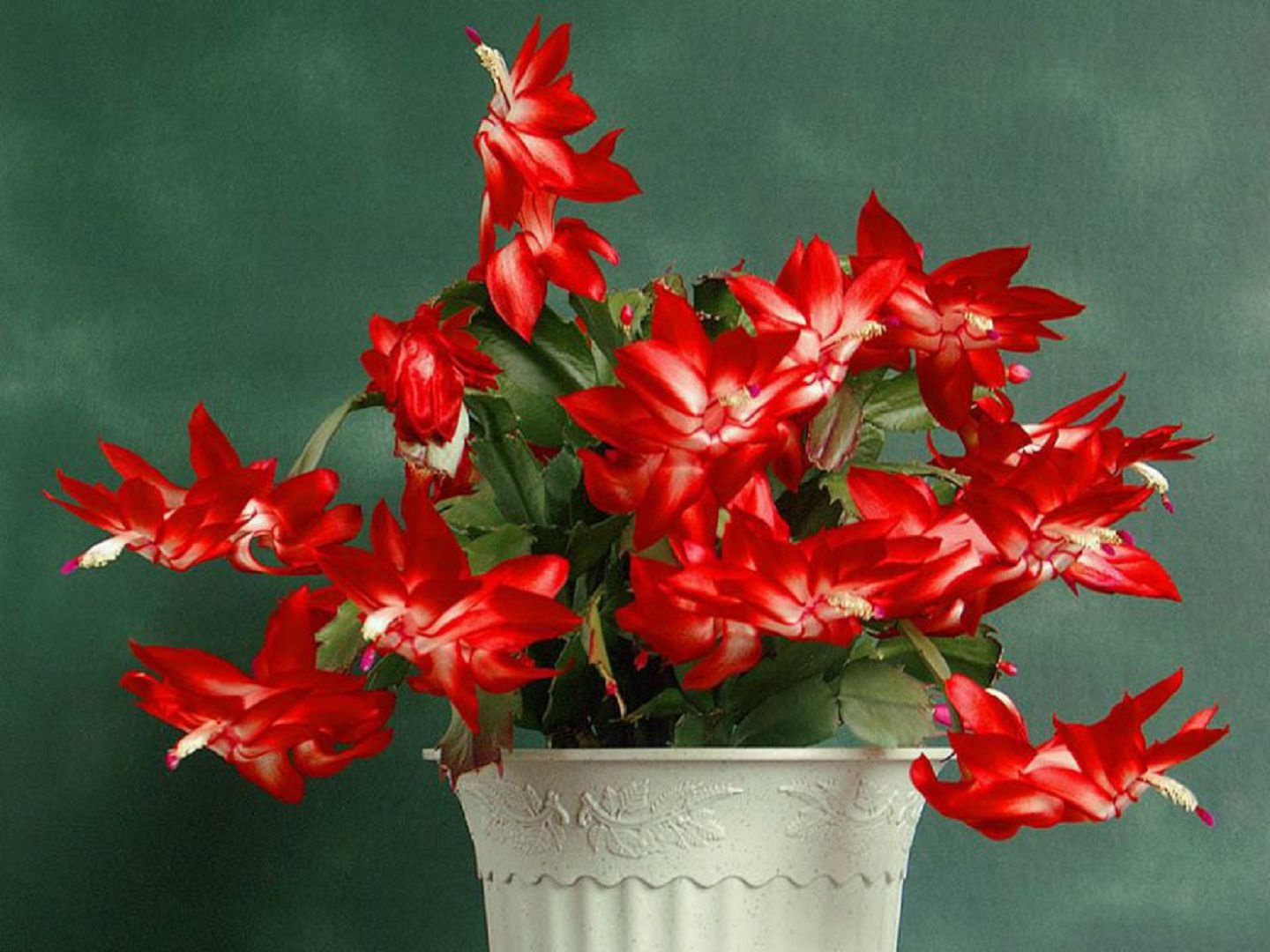In winter, it is especially nice to see flowering indoor plants. One of the most common is the Schlumberger plant, in other words "Decembrist" or "Christmas". Judging by the popular name, it begins to bloom with the arrival of winter in the month of December. The flower throws out buds in November and after a while you can see bright inflorescences. It often happens that numerous buds appear on the plant, then disappear. Why is this happening and what is the reason?
Decembrist flower
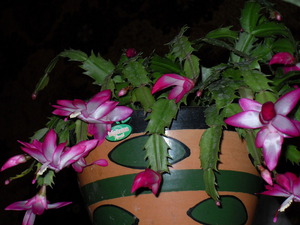 The plant belongs to the cactus family, but it differs from all other species in that blooms annually and has no thorns... Every winter, the indoor flower begins to bloom profusely and this continues for almost the entire winter period. A distinctive feature of the Decembrist is rapid growth.
The plant belongs to the cactus family, but it differs from all other species in that blooms annually and has no thorns... Every winter, the indoor flower begins to bloom profusely and this continues for almost the entire winter period. A distinctive feature of the Decembrist is rapid growth.
The tropics of southern Brazil are the birthplace of the flower, which is why it blooms in winter, when a turbulent flowering period begins in distant Brazil. At home, the Decembrist begins to dissolve the buds by the end of November and ends the flowering period at the end of January.
With proper care, a houseplant can grow up to 30-40 cm in height and wide. The Christmas tree has a weak root system, it can easily suffer from improper care. Flowers are striking in their bright and varied colors:
- white;
- raspberry;
- red;
- orange;
- lilac,
- coral.
Most breeders are happy to create new varieties of zygocactus, so many new species have appeared over the years.
Features of growing and caring for the Decembrist
This plant, like many others, needs proper care to ensure good development and abundant flowering. Everyone who loves this flower should know about the features of caring for it.
Christmas does not like tall pots, it is better to choose a wide and shallow container for him. The plant has a shallow root system and therefore needs good drainage. It will help to avoid stagnant water after watering, excessive moisture can have a detrimental effect on the root system. The most suitable soil mixture for planting and growing the Decembrist is considered to be a soil mixture consisting of the following components;
- peat;
- sand;
- leaf mixture;
- brick chips.
It is very important to take into account the illumination, because unlike other types of cacti, the Decembrist does not like direct sunlight... It is best to place the flower pot on the west or north side. The plant does not like high temperatures, the most favorable for good development and vigorous flowering is considered to be in the range of 17-20aboutC. For the beginning of an early and more abundant flowering of the Decembrist, experts recommend lowering the temperature to 15aboutFROM.
The plant does not need frequent and abundant watering. As the topsoil dries out, it is moistened, and at low temperatures it is better to reduce watering.
It is advisable to do top dressing in the summer, using a conventional cactus fertilizer. In the autumn, it is recommended to make a top dressing for ordinary flowering plants.
The Decembrist always reacts badly to a change in his permanent place, so he rarely needs to be rearranged. He is so sensitive that even after opening the pot can shed buds and not bloom.
In summer, it is advisable to take it out to the balcony or loggia, you can take it to the country. The flower will feel comfortable, provided that it will not be exposed to direct sunlight. With the onset of heat, the plant loves a warm shower, it must be sprayed with water more often. It is advisable to cover the soil in the pot during spraying so that water does not get there, but only removes the dust from the leaves.
The plant is one of the long-livers, zygocactus can live 15-20 years with normal and nurturing care. In the spring, it is imperative to do pinching to form the Decembrist crown. This procedure will rejuvenate the flower and give it abundant bloom.
Why does the Decembrist not bloom, and what to do?
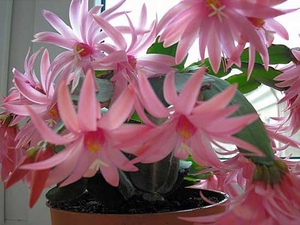 The Decembrist needs rest before the beginning of the flowering period. If you place it in a cool place, reduce watering and do not fertilize, and then put it back in its usual place, it will react positively and will soon delight you with an abundance of color.
The Decembrist needs rest before the beginning of the flowering period. If you place it in a cool place, reduce watering and do not fertilize, and then put it back in its usual place, it will react positively and will soon delight you with an abundance of color.
When buds appear on a houseplant, it is better not to touch it. Required humidity level can be provided by spraying... For a uniform appearance of buds, it is necessary to turn the flower pot occasionally.
It may not bloom due to improper awakening, and if the necessary conditions for this are created by the end of November, then it will begin to actively prepare for flowering.
Flowering is also influenced by pests and diseases... Periodically, the flower needs to be transplanted into another pot with new soil.
It is often possible to observe how the buds of a flower fall off. This is due to the fact that at the moment of throwing out the buds, the flower is turned or rearranged to another place. This cannot be done. The buds can also fall off for other reasons:
- lack of moisture or dry air;
- if the temperature constantly exceeds 18aboutFROM;
- the pot is in direct sunlight and the deciduous mass can get burned;
- he is badly affected by a change in temperature regime, the Christmas tree loves a stable temperature without sudden changes.
- abundant watering at low indoor temperatures.
It is better to transplant the plant annually, since abundant flowering leads to rapid soil depletion... It loses a lot of nutrients during the flowering period. The new transplant container should not be too large, the flower develops better in small pots. It is recommended to choose a new container 2-3 cm larger than the previous one. If this is not done, the plant will spend its entire supply of energy on building up the root system.
Diseases and pests
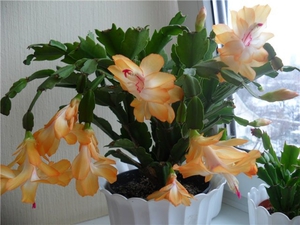 Various diseases and pests also affect the development of the plant. It must be inspected for their presence. Most often the Decembrist suffers from phytafluor, phytium, fusarium... Signs of the disease can be seen in the falling or withering leaves. Among pests, the most common are spider mites and mealybugs. To get rid of pests and diseases, it is recommended to use fungicides and insecticides. These products are suitable for preventive purposes.
Various diseases and pests also affect the development of the plant. It must be inspected for their presence. Most often the Decembrist suffers from phytafluor, phytium, fusarium... Signs of the disease can be seen in the falling or withering leaves. Among pests, the most common are spider mites and mealybugs. To get rid of pests and diseases, it is recommended to use fungicides and insecticides. These products are suitable for preventive purposes.
If you show attention and care in relation to the Christmas tree, he will certainly please with abundant and long flowering. Otherwise, the vulnerable flower will quickly react to the wrong attitude, shedding buds and stop flowering. Only attention and comfortable conditions for the development of a flower will provide it with a bright and lush bloom.
